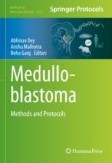Search
Search Results
-
Split-Luciferase Complementation Imaging Assay in Virus–Plant Interactions
Protein−protein interactions constitute the interface between a virus and the cell it infects and are crucial determinants of the outcome of the...
-
A Luciferase Reporter Assay to Detect Cellular Hypoxia In Vitro
Hypoxia is a hallmark of ischemic cardiovascular diseases and solid malignant tumors. Cellular hypoxia induces numerous physiological and...
-
Construction of luciferase-expressing Neospora caninum and drug screening
BackgroundNeospora caninum is an apicomplexan parasite that is particularly responsible for abortions in cattle and neuromuscular disease in dogs....

-
The Split-Luciferase Complementation Assay to Detect and Quantify Protein–Protein Interactions in Planta
Protein–protein interactions play a critical role in plant viral infection and defense responses against pathogens. This protocol provides a detailed...
-
Preparation of the luciferase-labeled antibody for improving the detection sensitivity of viral antigen
BackgroundViral antigen detection test is the most common method used to detect viruses in the field rapidly. However, due to the low sensitivity, it...

-
Monitoring autochthonous lung tumors induced by somatic CRISPR gene editing in mice using a secreted luciferase
BackgroundIn vivo gene editing of somatic cells with CRISPR nucleases has facilitated the generation of autochthonous mouse tumors, which are...

-
Validation of microRNA Target Genes Using Luciferase Reporter assay and Western Blot Analysis
MicroRNA MicroRNA (miRNA) s regulate gene expressionGene expression by binding to the 3′untranslated region (UTR) of the mRNA of their target genes....
-
Luciferase-Based High-Throughput Screen with Aspergillus fumigatus to Identify Antifungal Small Molecules
Only three classes of contemporary antifungal drugs are routinely utilized in the clinic against filamentous fungal pathogens such as Aspergillus...
-
Generation and Application of a Luciferase Reporter Virus Based on Yellow Fever Virus 17D
Yellow fever virus (YFV) is a re-emerging virus that can cause life-threatening yellow fever disease in humans. Despite the availability of an...

-
Analysis of Regulatory DNA Sequences by Dual-Luciferase Reporter Assays in Ewing Sarcoma
Reporter gene assays allow for examining the influence of regulatory DNA sequences on the transcription of target genes. In Ewing sarcoma, the study...
-
Evaluation of the skin sensitization potential of metal oxide nanoparticles using the ARE-Nrf2 Luciferase KeratinoSensTM assay
Numerous studies have reported the potential of chemicals for inducing skin sensitization; however, few studies have examined skin sensitization...

-
The IL-1 promoter-driven luciferase reporter cell line THP-G1b can efficiently predict skin-sensitising chemicals
IL-1 functions as an essential pro-inflammatory mediator for the sensitisation of allergic contact dermatitis (ACD). However, studies conducted to...

-
A Quantitative Fusion Assay to Study Measles Virus Entry
We have adopted a real-time assay based on a dual-split reporter to assess cell-cell fusion mediated by the measles virus (MeV) membrane fusion...
-
A Semiquantitative Protein-Fragment Complementation Assay to Study Protein-Protein Interactions of the Polymerase Complex in Cellula
Protein-fragment complementation assays (PCAs) are powerful tools to investigate protein-protein interactions in a cellular context. These are...
-
Methods for Establishing and Using a Stable Cell Line Expressing Both Gaussia Luciferase and Firefly Luciferase to Screen for Endoplasmic Reticulum Stress
Endoplasmic reticulum (ER) stress is one of the major mechanisms underlying the etiology of multiple diseases and drug-induced toxicity. Gaussia...
-
Characterization of SARS-CoV-2 Glycoprotein Using a Quantitative Cell–Cell Fusion System
Coronaviruses (CoVs) infect host cells through the fusion of viral and cellular membrane and may also spread to the neighboring uninfected cells from...
-
Investigating the Function of MicroRNAs in Human Retinal Microvascular Endothelial Cells of Diabetic Retinopathy
Diabetic retinopathy (DR) is the main complication of diabetes mellitus (DM). Recent studies have implicated microRNAs dysfunction in human retinal...
-
Host Cell Reactivation: Assay for Actively Transcribed DNA (Nucleotide Excision) Repair Using Luciferase Family Expression Vectors
Host cell reactivation (HCR) is a transfection-based assay in which intact cells repair damage localized to exogenous DNA. This chapter provides...
-
Use of CIDEA Reporter Mouse Model for Screening Thermogenic Fat-Activating Drugs
Excessive fat accumulation is a risk factor for metabolic diseases. Activating non-shivering thermogenesis in adipose tissue increases energy...
-
Oxomer- and Reporter Gene-Based Analysis of FIH Activity in Cells
Cellular and tissue adaptations to oxygen deprivation (hypoxia) are necessary for both normal physiology and disease. Responses to hypoxia are...
